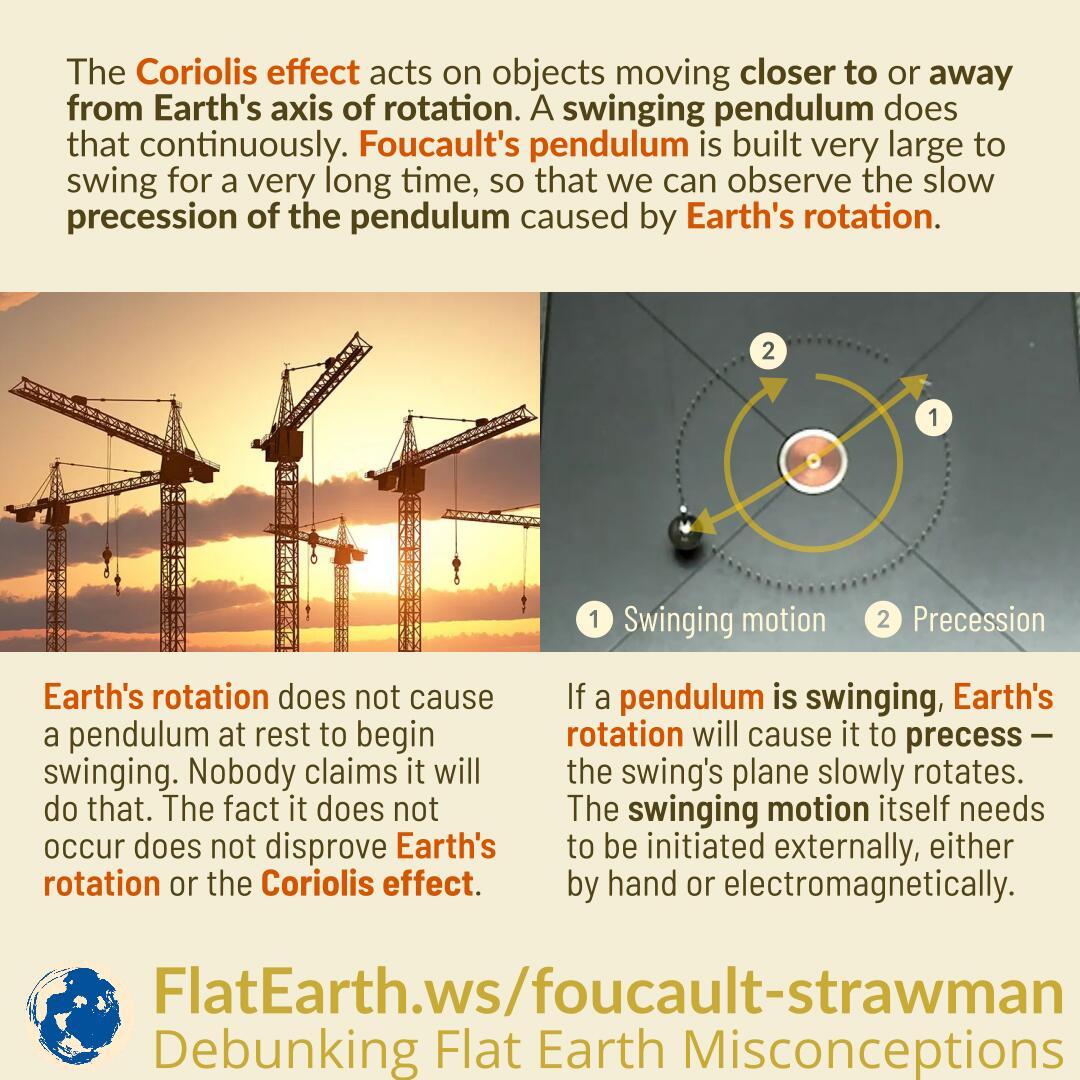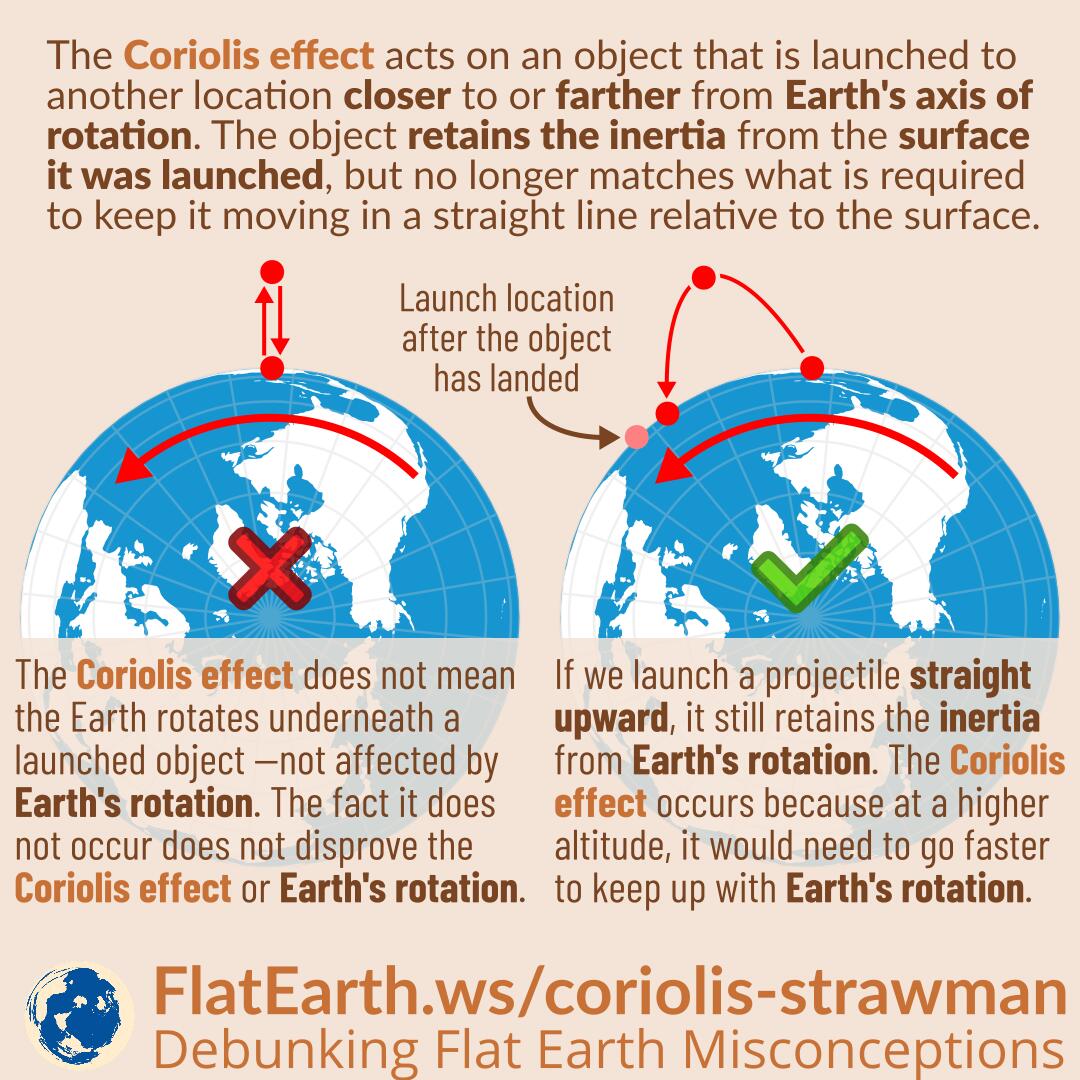The Coriolis effect acts on objects moving closer to or away from Earth’s axis of rotation. A swinging pendulum does that continuously while staying in the same place. Foucault’s pendulum is built very large to swing for a very long time so that we can observe the slow precession of the pendulum caused by Earth’s rotation.
Earth’s rotation does not cause a pendulum at rest to begin swinging, and flat-Earthers use that as “proof” that Foucault’s pendulums are manipulated. In reality, nobody claims the swinging motion of Foucault’s pendulum is caused by Earth’s rotation. The fact that Earth’s rotation does not cause a pendulum to swing does not disprove Earth’s rotation or the Coriolis effect.
Continue reading “Misconception and Strawman Arguments About Foucault’s Pendulum”



